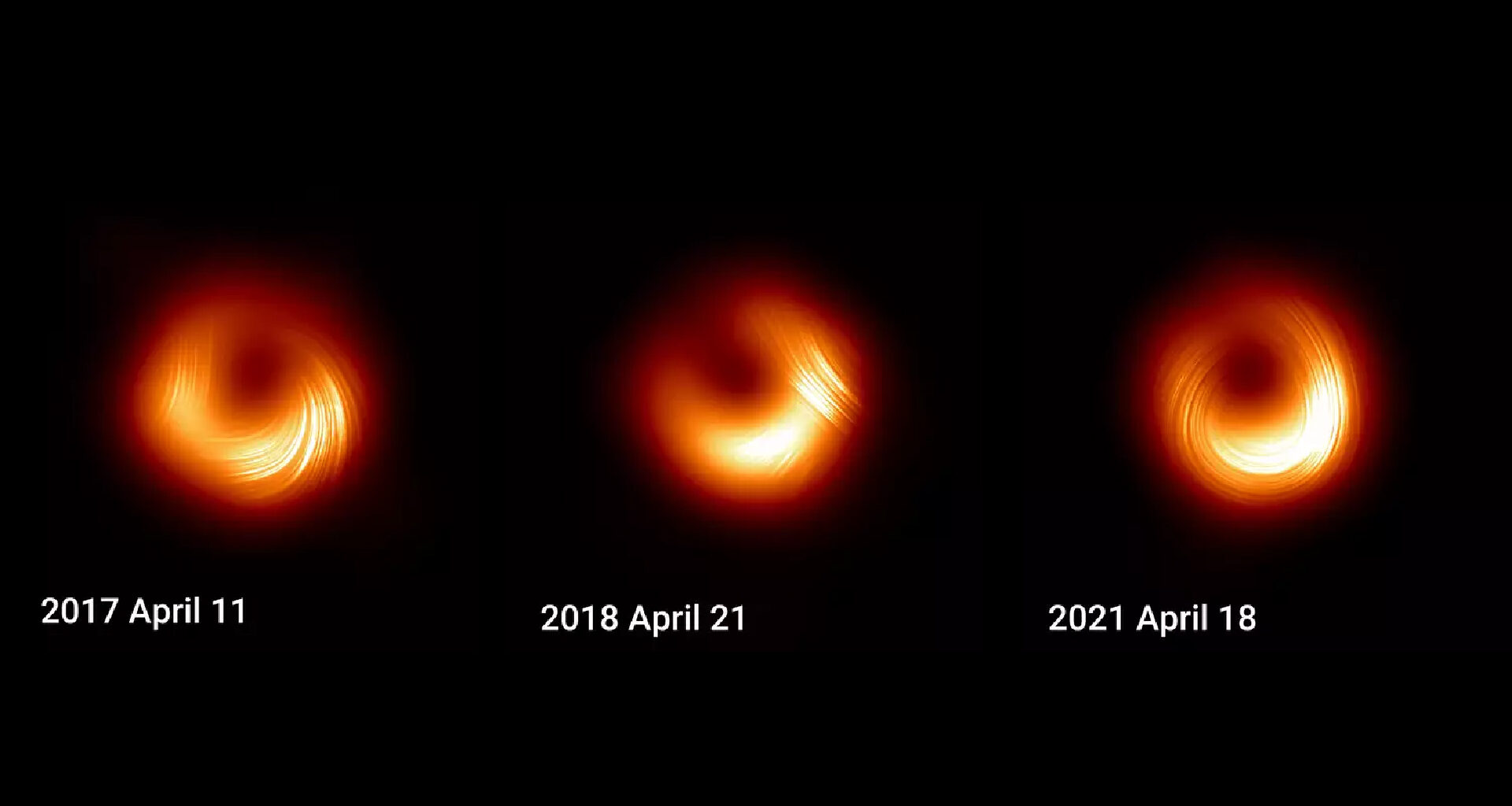One of the first black holes ever imaged is even stranger than we thought, new images of its dramatically changing environment reveal.
The object, known as M87*, has experienced unexpected changes in its magnetic fields that are showing up in polarized light — meaning, light waves that are orientated in the same way (such as vertically, or horizontally).
You may like
“With only three images of M87*, we’re just beginning to scratch the surface of its horizon-scale mysteries — but we’re certain that we can,” Sebastiano von Fellenberg, who was a scientist at Germany’s Max Planck Institute for Radio Astronomy (MPIfR) when the research was carried out, told Live Science in an email.
A black hole comes to light
Images of M87* were so far obtained in 2017, 2018 and 2021 by the Event Horizon Telescope (EHT) collaboration — a global network of radio telescopes that just added two new observatories to its network in Arizona and France. As its name implies, the black hole resides at the center of the galaxy Messier 87 (M87), and is located 55 million light-years from Earth.
Now EHT, in collaboration with MpiFR, is tracing the “dynamic environment” surrounding the black hole after analysis of these three images, the consortium wrote in a press release.
M87* is quite massive, more than six billion times the mass of the sun. The new polarization information provides scientists with data about how the magnetic fields around it are structured, and how strong those fields are.
As the theory goes, magnetic fields at supermassive black holes are situated in a disk of plasma (superheated gas) circling the black hole. These fields spin together into “magnetic towers” full of incredible energy.
That energy in turn propels matter along jets, which are stabilized by the magnetic fields and move at close to the speed of light. The jets come from a small area surrounding the black hole, but still have a large effect on the galaxy’s star formation and energy distribution — both of which play into the galaxy’s evolution.
You may like
Von Fellenberg, who is now a fellow at the University of Toronto-based Canadian Institute for Theoretical Astrophysics, said there are two main takeaways from the work: that the polarization has a lot of variability, but that the total intensity images (topographic images) of M87* remain consistent.
“Both of these outcomes are expected to some degree,” he explained. Total intensity is related to how much gravitational potential a black hole has, which shouldn’t change much in the few years in which the images were collected.
But polarization, he added, “traces the state of the matter and magnetic field in the accretion flow — and to some extent, along the base of the jet.” As such, said von Fellenberg, “The changes we observe imply that each snapshot captures a different state of these properties, which is consistent with theoretical predictions.”
A dramatic shift
One big surprise was a polarization measure observed in 2021, called angle β₂. Compared with previous readings in 2017 and 2018, this measurement “shifts so dramatically that it no longer aligns with the electromagnetic-energy flux from previous years,” von Fellenberg said.
Or as officials put it in the press release, the polarization pattern “flipped direction” between the three images: the magnetic fields were spiraling one way in 2017, stabilizing in 2018, and then reversing in 2021.
Scientists are trying to explain why this happened. From physics, they know that the discrepancy can only be explained if they see no additional polarization changes caused by electrons or matter along the line of sight, called external Faraday rotation.
This leaves the team with four possible explanations: a change in the underlying magnetic field structure, a change in the degree of Faraday rotation, evolving contributions from different emission regions (such as the disk or jet), or a combination of the first three factors.
Black hole quiz: How supermassive is your knowledge of the universe?

